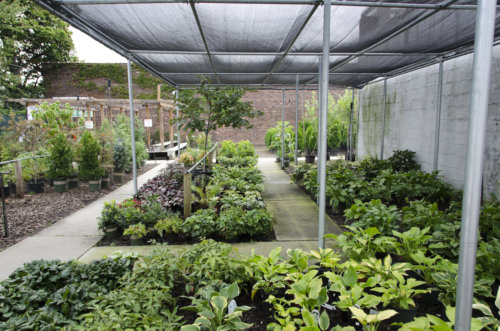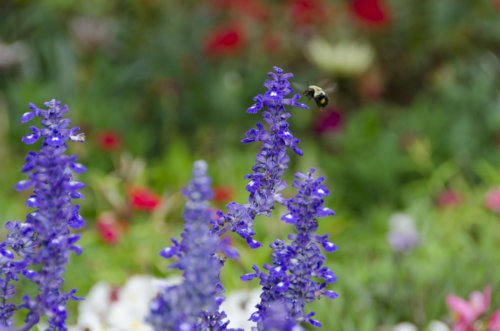
A Tree Grows in Brooklyn
Paula A. Johnson is an internationally-recognized researcher, educator, cardiologist, and health policy expert who has dedicated her career to transforming the health of women. Earlier this summer, she became the 14th President of Wellesley College, after serving as founder and executive director of the Connors Center for Women’s Health and Gender Biology as well as chief of the Division of Women’s Health at Brigham and Women’s Hospital.
As the first incumbent of the Grace A. Young Family Professor of Medicine in the Field of Women’s Health at Harvard Medical School (as well as a former professor of epidemiology at the Harvard T.H. Chan School of Public Health), Johnson’s accomplishments are as numerous as they are meaningful. In a recent conversation with Garden Collage, she spoke about the manner in which her father– a gardener and tree aficionado– encouraged her family to stay grounded in the community through the garden and one very special local nursery in Brooklyn. Below, we speak with Johnson about her family’s connection to gardening, the changing face of New York City, and how plants like her family’s own weeping cherry tree continue to unite people across generations.
GC: Tell us about your background and your family’s connection to gardening.
PJ: I was born on Midwood Street, Brooklyn, between New York and Nostrand Avenue. My family had a four-family home they bought right before I was born, and where I lived until I was about seven years old. We would garden, and get our shrubbery and plants and bulbs at this nursery on New York Avenue. I grew up going to this place– I didn’t think much about it at the time, but it was the place we would walk to get all of our plants. Like for Mother’s Day, my father would go and get a certain azalea for my mother and would plant them.
Where we lived, we didn’t have much land, but we did have these two areas of green. One summer, we planted vegetables in one small part of the garden. As a kid from Brooklyn, I thought it was amazing that we were going to actually plant vegetables. But it was the year of the drought, and we couldn’t water. Of everything we planted– out of the whole thing– we only ended up with one string bean. My mother cooked and divided it in four for us.
My father has other trees in the backyard– a couple of others that mean a lot to him– but that tree, it has meaning. There’s a connection to time and place and what this nursery has meant throughout my entire life, what it means to my family. At some point our house will be sold, but these trees will be there. They bind generations.
Fast forward, we moved back to Sterling Street (which is only about five blocks away from where I was born). My father has a one-family brown stone between Nostrand and Rogers with a very nice garden in the back that gives him a tremendous amount of joy. My father works with a gardener who works on the yards of so many of our neighbors that he doesn’t even knock on the door; he just goes house to house.
When my mother died almost three years ago, we were in Brooklyn for the wake and the funeral. My husband felt very strongly that he wanted to go to the nursery I grew up going to. (It was opened in 1955 and I was born in 1959.) We went and bought this weeping cherry tree. Now, my father wasn’t very happy when we brought it home because he was grieving. But my husband felt strongly that it was a mark in time– that this tree would, in some way, memorialize my mother. That tree has turned into the most beautiful flowering weeping cherry trees. My father has other trees in the backyard– a couple of others that mean a lot to him– but that tree, it has meaning. There’s a connection to time and place and what this nursery has meant throughout my entire life, what it means to my family. At some point our house will be sold, but these trees will be there. They bind generations.
There was an article in the New York Times recently on Arthur Miller, for the centennial of his birth. The article talks about the various places he lived in Brooklyn, and there was one particular place where he had planted a tree. About ten years ago, his sister, who at the time was 93, went back and the tree was there. For almost a hundred years that amazing tree was there. But then in 2012, it was destroyed in Hurricane Sandy. After that force of nature, it’s now just a stump.
The article made me think about what will happen moving forward. We’ve planted a number of trees at our home in Brookline to memorialize the birth of our children– it’s almost like having another child that is nurtured and taken care of. It grows and it survives you, hopefully.
GC: In New York City, there’s a concern about the changing face of the city and gentrification. Is that something you think about consciously or unconsciously when reflecting on this nursery?
PJ: The nursery has been supported by the neighborhood for years. On average, the neighborhood was a lot of homeowners– good housing stock, but working class. The nursery was supported through all those years by those people. Now, the houses are selling for a million dollars on my parents’ block, so good housing stock and gardens– it’s a whole ‘nother story. But I would hope the people in the neighborhood continue to support the nursery.
When we moved in to the neighborhood, we were probably the third black family on that block. It was very ethnic– Jews, Italians, Polish, Irish, and a few blacks. Then, you saw a transition to an almost all black population with a large Caribbean demographic. I imagine with a large Caribbean population, you probably also have a different dedication to gardening. Now it’s transitioning again.
At least where my parents and brother now live, there’s a true dedication to neighborhood. My parents knew and still know the people who were moving on the block, and it still is the true sense of community. I think transitions are natural, but I do hope that the new people moving in continue to have a sense of place and community, and embrace those who’ve come before them. Part of embracing those who’ve come before them is understanding what that land meant, and part of that honoring is what was planted.
My son was in Clybourne Park at Harvard recently, the spin off of A Raisin in the Sun. In Clybourne Park, the first act is the story of the family from A Raisin in the Sun integrating the neighborhood. After the intermission, the play fast-forwards to 2008 when the neighborhood is now being gentrified. They actually make reference in the play to a tree that had been planted in the back– that it was like this transcending of time.
Whatever happens to our house in the future, I really hope those trees remain for the next hundred years. It’s made me want to go back to our original house to look and see if any of the hedges or azaleas that we planted are still there. But I don’t know the answer to that.
GC: There’s this anthropological element to why things are planted, who plants them, and how they reflect on the private home or the community in which you find them. But there are other non-edible elements of the garden that can seemingly play a similar role– on a much more personal level.
PJ: I think it’s the part that we don’t talk about– which is the honoring of the past and how we tie that history together. The house we live in was built in about 1867. My husband got all of the records; we know when different parts were added, we know who lived there. (One of the families that lived there we actually knew personally. (Not the ones before us, but two families before us.) It’s a sense of history and place. Whatever happens in Brooklyn, we shouldn’t lose that. It’s such an important part and special part of Brooklyn’s history. My grandmother cleaned houses, and my grandparents bought their first home in Bedford-Stuyvesant. That’s the home I grew up going to for holidays. They ended up selling it, but we went back on my grandfather’s eightieth birthday. We went over and the family living there invited us in. We saw the garden that my grandmother loved so dearly– in fact, she died very peacefully in her rocking chair in the garden.
Brooklyn– well, now it’s this gentrified, hip place. I just hope that, as we talk about it, there’s an [attempt to] honor all the people who made it into this incredible place, and what it meant to their lives– because it is a pretty impressive place in that way. Not just the famous lives, but those that are ordinary, too.





































